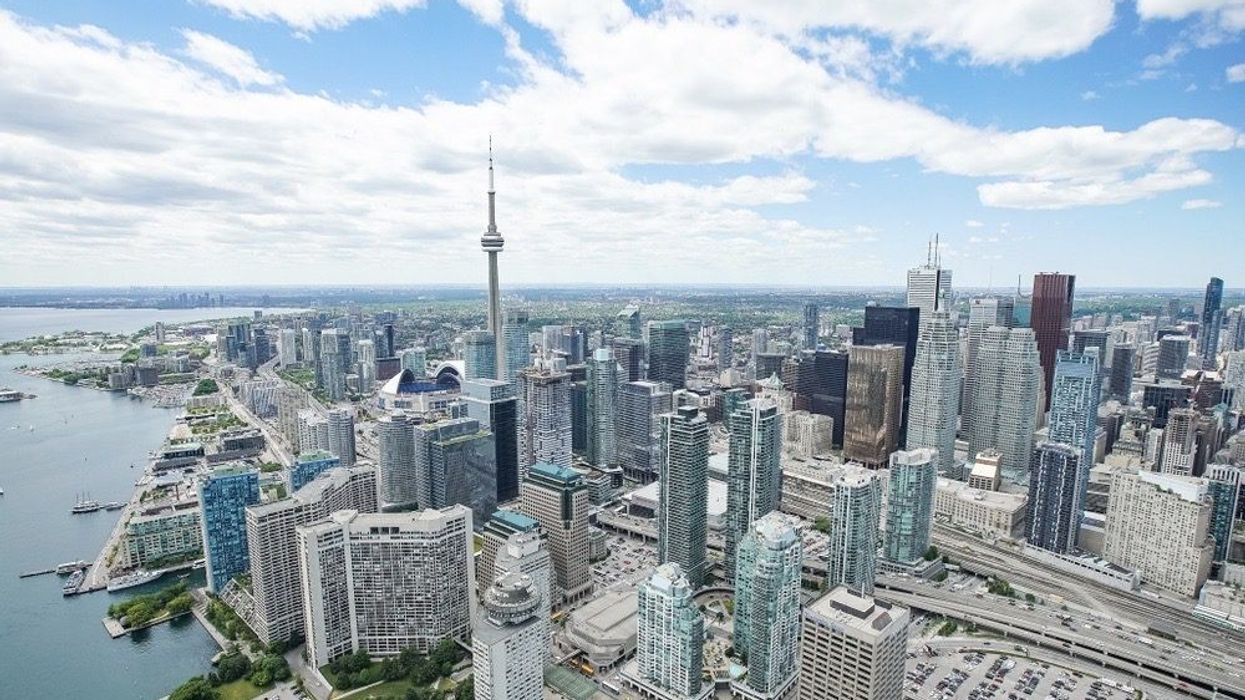Toronto is back in business.
As a loud and clear sign of the pandemic recovery times, downtown Toronto’s foot traffic has surged by 62% since March.
Global commercial real estate advisor Avison Young has released its latest Toronto office market report, which reveals a re-emergence of life and activity to Toronto’s streets. Avison Young’s Vitality Index tracks foot traffic using cell phone pings in 23 downtown cores across North America, including six cities in Canada.
According to the report, Toronto recorded its highest volume of downtown foot traffic since March 2020 during the week of June 13, 2022 (volume for the week ending July 17, 2022 is only slightly lower). Across North America, average downtown foot traffic volume is at the highest level for the week of ending July 17, 2022, since March 2020.
According to the report, the Greater Toronto Area (GTA) saw positive absorption for the third straight quarter --following six negative quarters during the pandemic -- as occupied area increased by 443,000 square feet. Downtown Toronto’s positive absorption reflected 1.5 million square feet, the highest positive absorption since before the pandemic.

In the downtown core, an 8.3% downtown office vacancy ticked up from 8.0% due to new product entering the market. This figure is up from 2.1% in the first quarter of 2020. In the pricey city, some companies see opportunities to grow or move to better-located or higher-quality premises, while others see options to downsize or sublet.
“While some companies continue to consider downsizing or subletting a portion of their office space, others are seeing opportunities to grow or move to better-located or higher-quality premises, and new occupiers entering the Toronto market for the first time continue to make headlines,” reads the report.
Availability of space in the GTA office market held steady in the second quarter of 2022, after the rapid rate of increase seen during the pandemic had begun to level off in recent quarters, according to the report. “The market remains active as a greater range of available options offers tenants the chance to explore alternatives that best suit their evolving needs, amid the ongoing changes in workplace strategy sparked by the pandemic,” it reads.
The GTA office market continues to be “characterized by sound fundamentals,” with availability remaining flat at 15.5% quarter-over-quarter, while vacancy climbed 80 basis points (bps) to 10%. For the third straight quarter, absorption was in positive territory (following six negative quarters during the pandemic) as occupied area increased by 443,000 square feet (sf) across the GTA. Gains in the downtown market were offset by losses in midtown and the suburbs, according to Avison Young.
Total available sublet space was essentially flat for the second consecutive quarter in the GTA, inching up 1% to 6.3 million square feet (msf). Nearly 8.2 msf of new office space was under construction across the GTA at the end of the first quarter (66% preleased / equal to 4% of inventory).
As with the GTA overall, the availability rate remained flat quarter-over-quarter in the downtown Toronto market at 14.1%, representing an increase of 130 bps year-over-year. Vacancy continued to edge upward, rising 30 bps to 8.3% during the second quarter. This is despite positive absorption of more than 1.5 msf, by far the market’s best result since before the pandemic.
The increase in occupied area was localized in downtown south, as tenants began to take occupancy of new buildings completed in recent quarters, with King and Dufferin the only other downtown node to post positive absorption during the second quarter.

The midtown market posted rising availability (up 30 bps to 14.3%) and vacancy (up 210 bps to 10.1%) quarter-over-quarter. The jump in vacancy resulted primarily from significant negative absorption in the Bloor node, where occupancy decreased by more than 340,000 sf during the quarter -- the losses mostly occurring in class B buildings.
Overall availability in the Toronto north and east markets rose 50 bps during the second quarter to 16.5%, while vacancy climbed 80 bps to 10.2%. Occupancy gains in the east were offset by losses in the north, says Alison Young -- particularly the north Yonge node, where negative absorption can be partially attributed to tenants taking advantage of the increased range of available options in the downtown market.
No new supply deliveries have added to the north and east inventory so far in 2022; however, two new construction projects are under way in the east market totalling nearly 166,000 sf (82% pre-leased), while in the north, a total of nearly 647,000 sf is under construction across four projects (59% pre-leased).
The return to life as we knew it pre-pandemic is not only reflected in things like rising foot traffic and the return of employees to the office, but also in the return of Toronto's maddening traffic (not that we're complaining; we'll take that over lockdowns any day).





















